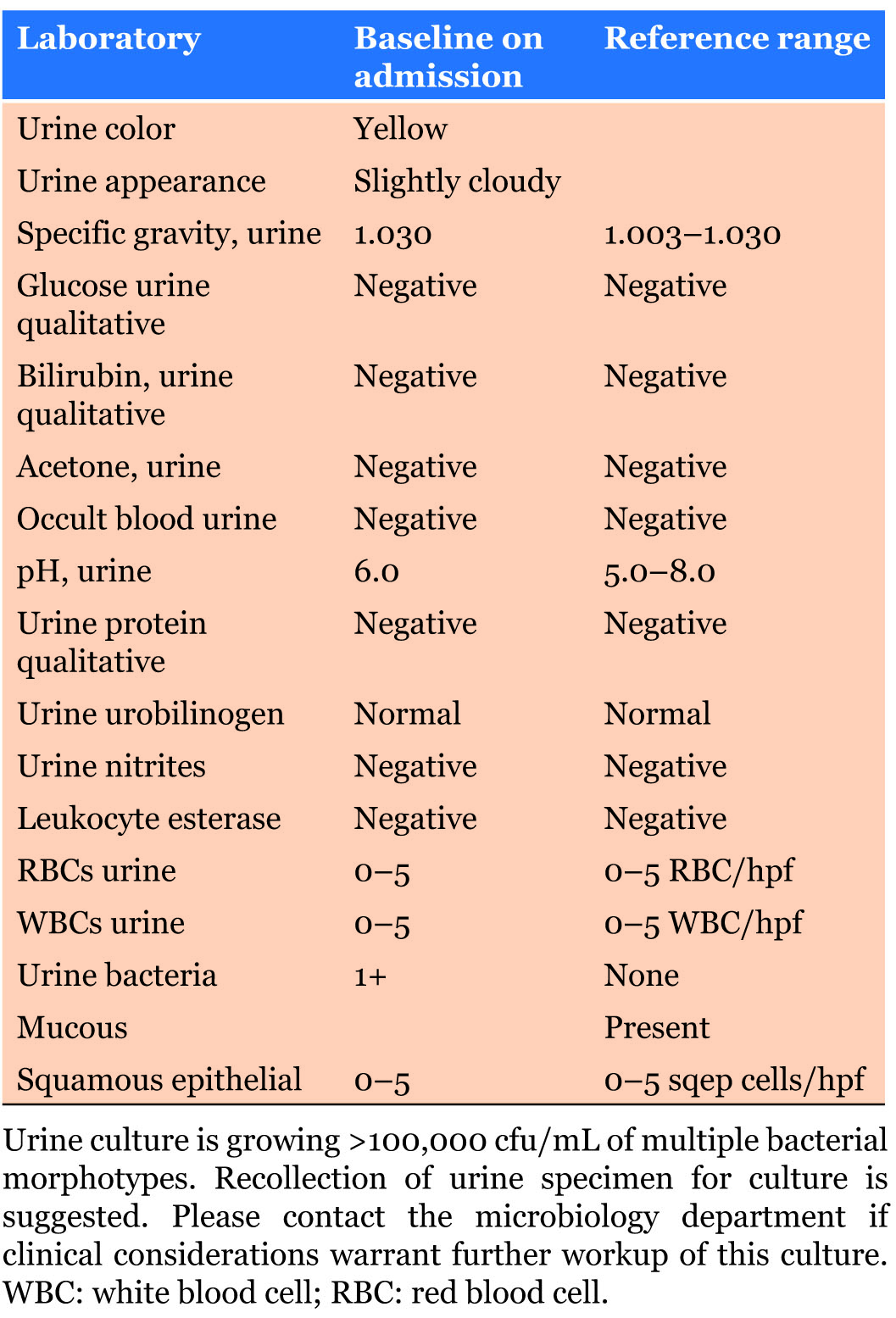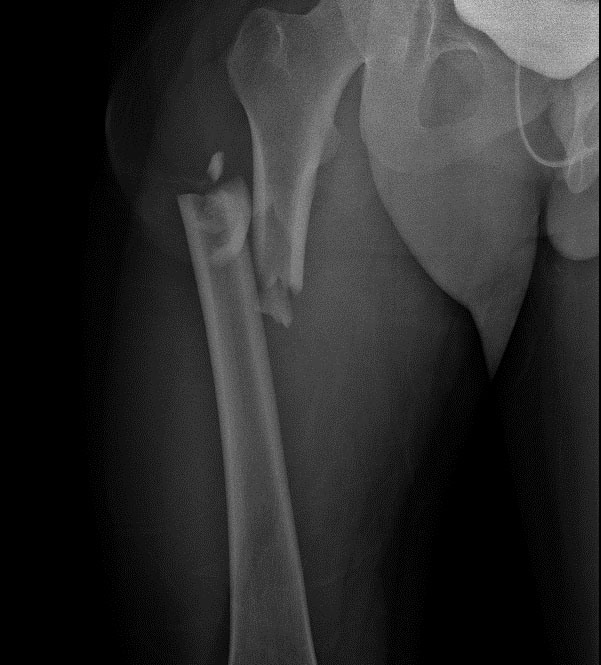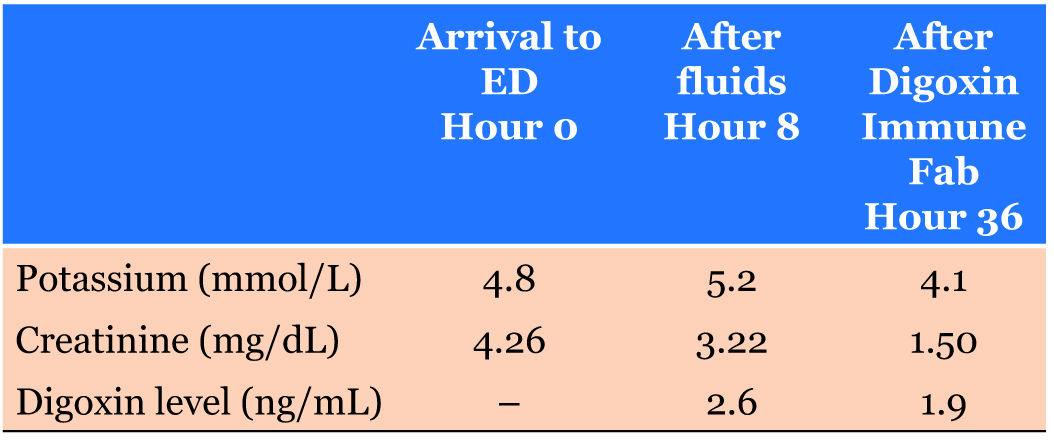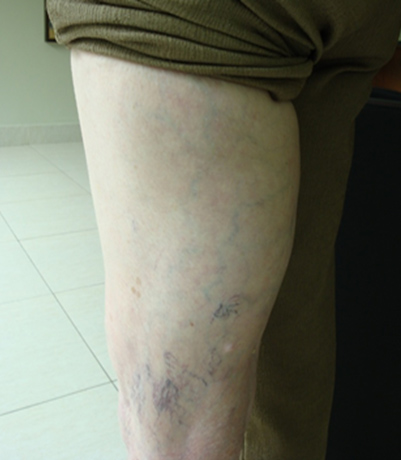 |
Case Report
“One in a million”: A case of a very early onset schizophrenia
1 Assistant Professor of Psychiatry, Department of Psychiatry, Penn State Health Milton S. Hershey Medical Center, Hershey, Pennsylvania, USA
2 PGY4-Child and Adolescent Psychiatry Fellow, Department of Psychiatry, Penn State Health Milton S. Hershey Medical Center, Hershey, Pennsylvania, USA
Address correspondence to:
Daisy Vyas Shirk
DO, 875 Stoverdale Road, Hummelstown, Pennsylvania 17036,
USA
Message to Corresponding Author
Article ID: 100083Z06DS2020
Access full text article on other devices

Access PDF of article on other devices

How to cite this article
Shirk DV, Pathak M, Lagman JG, Janjua KS. “One in a million”: A case of a very early onset schizophrenia. Case Rep Int 2020;9:100083Z06DS2020.ABSTRACT
Introduction: Very early onset schizophrenia (VEOS), psychosis prior to age 13, is rare with an incidence of less than 0.04%. Its clinical presentation, course, and outcome differ from early onset (ages 13–18) and adult onset (ages 18 and up) schizophrenia. It is associated with poor response to treatment, poorer prognosis, and multiple hospitalizations. Early identification and intervention has shown to improve overall functioning.
Case Report: We present a case of a 12-year-old female with significant family history of psychosis, admitted due to physical and verbal aggression, sexual inappropriateness, destruction of property, response to internal stimuli, decline in functioning, and 10 month history of social isolation. She responded to risperidone treatment. The patient was discharged to partial hospitalization program but could not tolerate the group setting resulting in discharge to outpatient services. Psychosocial supports were put in place to help with environmental and family dynamics to improve outcome.
Conclusion: As per a recent study, one-third of children and adolescents with psychosis initially present with negative symptoms. It has also been reported that 30% of those with negative symptoms develop treatment failure with antipsychotics. Given these statistics and the treatment challenges of this case, it was imperative to provide additional psychosocial supports to the patients and families, to improve overall functioning and long-term prognosis.
Keywords: Compliance, Intellectual disability, Psychotic disorders, Psychosocial support systems
INTRODUCTION
Very early onset schizophrenia (VEOS), defined as onset of psychosis prior to age 13, is considered to be very rare [1]. It has been shown to differ in its clinical presentation, course, and outcome compared to early onset (between ages 13 and 18) and adult onset (ages 18 and up) schizophrenia. It is associated with poorer prognosis, worse overall functioning, and multiple hospitalizations [2]. Early childhood adversity and borderline intellectual functioning have also been shown to contribute to development of psychosis [3],[4],[5]. Early identification and intervention have been shown to reduce the morbidity of the illness and improve overall functioning. Here we present the case of a young girl with very early onset schizophrenia.
CASE REPORT
This is a case of a 12-year-old female child who was admitted in the inpatient child psychiatry unit due to physical and verbal aggression toward peers and staff, sexually inappropriate touching, destruction of property, attempting to run out into traffic, and responding to internal stimuli.
The patient was reportedly doing well until 10 months prior to her hospitalization, after which she exhibited school refusal and declining grades. The only trigger reported was school bullying. She was noted to become more verbally and physically aggressive toward peers and school staff, with daily outbursts, eloping from school, poor sleep, and social isolation. At home, she was observed to sit in the halls in the middle of the night, conversing with herself. She changed from a child who “used to love talking, playing board games, and card game with her cousins” into someone who “now sits by herself and does not say anything to them or do anything with them.” She was also found one time sitting on her porch eating leaves.
She was referred and underwent partial hospitalization. During that treatment, she was observed to be impulsive, hyperactive, withdrawn, had difficulty with peer interactions, appeared internally preoccupied, laughed inappropriately, talked to herself, sing, or would dance alone without music. She struggled with boundaries and attempted few times to choke staffs with their lanyards or with her hands. She destroyed property, made verbal threats toward staff and peers, and made sexually inappropriate comments and gestures. She was given a trial of lithium and risperidone. She did not tolerate lithium but responded to risperidone 1 mg daily. Upon discharge, there was no follow-up and patient ran out of medication. This led to a deterioration of behaviors resulting in inpatient treatment.
Patient’s developmental history and medical histories are unremarkable. Her family history is significant for schizophrenia in her father who reportedly went from being a straight A student, attending college on a full scholarship to dropping out of school, having multiple incarcerations and now has been institutionalized in a long-term psychiatric facility for the past 10 years. The patient’s mother also received inpatient treatment after patient’s birth and there was a threat of all three children being removed by Children and Youth Services (CYS). At the time of hospitalization, she lived with her mother, 9-year-old sister, and 3-year-old brother. Child protection services were involved at the time of admission due to concerns of a possible sexual abuse based on patient’s sexualized behaviors.
Mental status examination at the time of admission
The patient had fair grooming but was agitated and uncooperative during the interview. Her eye contact varied from fair to intense staring. She did not display any motor abnormalities including tics or tremors. She spoke loudly and often repeated the phrase, “I don’t give a f***” to many questions. She refused to describe her mood and her affect was bizarre and labile; though content was characteristic of paranoia and perseverations. She refused to answer questions related to perceptual disturbances, suicidality, and homicidality. Her orientation, memory, and knowledge could not be fully assessed. Her attention, insight, and judgment were impaired.
Admission diagnosis
Unspecified psychosis was not revealed due to a substance or known physiological condition.
Course of inpatient treatment
The patient was diagnosed with unspecified psychosis on admission. Workup (Table 1, Table 2, Table 3, Table 4, Table 5, Table 6) was done and the patient was restarted on risperidone for her aggression and hallucinations. On her first three days of hospitalization, she displayed aggressive, impulsive, and disruptive behaviors toward peers and staffs. Her risperidone was titrated up to 1.75 mg/day. Her aggression subsided and she was able to attend groups. However, she had difficulty engaging with others, often preferring to sit by herself and away from the crowd. She initially endorsed auditory and visual hallucinations where she saw shadows or gravesite with numbers. She would occasionally have difficulty distinguishing reality from fiction, often asking staff if they were real or part of her imagination. Early on in her treatment, the patient had several days when she reported “itching” on her chest stating that she was being stabbed by someone. Once that was resolved, she became preoccupied by her fingertips and would often be seen picking at the tips of her fingers. She struggled with being able to process information and was often mute or would repeat things that had been said to her or perseverate on a specific sentence. She displayed paranoia on the unit, often worrying that someone would come in and hurt her and at times feared that the staff would hurt her. Initially, she had trouble sleeping at night and would often stand in her doorway staring at staff for the majority of the night. She was allowed to sleep on a mattress in her doorway which seemed to help at times but not consistently. Later, she denied having hallucinations although she appeared internally preoccupied throughout the stay.
Neuropsychological assessment was completed which revealed that the patient’s IQ was likely in the borderline range (70–79). She had limited verbal comprehension and expression, relative weakness in verbal knowledge, fluid reasoning, set-shifting, visual-motor integration, phonemic and semantic fluency, and rote verbal memory. She also had significant deficits in executive functioning and negative and positive symptoms of psychosis.
Medical issues
Started on Vitamin D3 to correct for low Vitamin D.
Interventions at discharge
Due to the many challenges this patient presented and concerns about compliance with aftercare recommendations, she was referred to as many outpatient services as possible to help improve her prognosis. These services included partial hospitalization, involvement of children and youth services, case management services, family support in the form of patient’s paternal grandmother, referral for electroencephalogram (EEG) and magnetic resonance imaging (MRI) of brain and school involvement.
Partial hospital treatment
Upon arrival to partial hospitalization, patient’s behaviors had deteriorated due to non-compliance with medications for a week as a result of problem with insurance. She reported sporadic hallucinations, giggled by herself, displayed thought blocking, disorganized behaviors, made random, unrelated, bizarre statements, sometimes loudly and perseverated on them and was paranoid.
During her partial hospitalization, she was disruptive, made sexually inappropriate comments and became verbally and physically aggressive toward staff. As a result of these behaviors and her inability to tolerate the group setting of partial hospitalization, she had to be discharged to outpatient services. As was the case during her discharge from inpatient treatment, patient’s mother did not show up for her discharge and CYS had to find her.
When found, her mother once again claimed she was unaware of the discharge.
Follow-up in outpatient treatment
In the outpatient clinic, risperidone was titrated up to 1 mg orally twice a day, with a good response. Patient’s mother reported that the patient was doing well in school and seemed to be at her baseline after dose increase. During outpatient visits, the patient denied hallucinations, thought blocking was noted to improve, and the patient was answering questions and smiling appropriately most of the times.
Response latency and processing time remained slow but showed improved from previous visits. Family based mental health (FBMHS) services were recommended and started with in-home therapy 2–3 times a week. A case manager through CYS was recommended to support family in managing follow-up appointments.
DISCUSSION
Very early onset psychosis, defined as psychosis before the age of 13, is an extremely rare occurrence with an incidence of less than 0.04% [1],[6]. One-third of children and adolescents with psychosis initially present with negative symptoms and 30% of those who present with negative symptoms at baseline go on to develop treatment failure with antipsychotics. Confounding these statistics is that VEOS is often difficult to diagnose, especially in this case due to lack of reliable collateral information from family. Our patient presented with several risk factors including father’s diagnosis of schizophrenia requiring institutionalization for the past 10 years. There was also a strong suspicion of mental illness in patient’s mother. Environmentally, our patient had a history of trauma in the form of bullying at school and she lacked social supports and lack of follow-up with treatment recommendations.
Additionally, our patient had several premorbid symptoms such as social withdrawal, poverty of speech, and steady decline in social and academic performance over the course of her educational history. Freeman et al. [4] have reported that there is a direct correlation between lower intellectual functioning and development of psychosis due to alteration in the way stimuli and events are interpreted. Another study demonstrated a significant association with psychosis and auditory hallucinations “that remained significant after controlling for age, gender, current social class and ethnicity” [5]. Childhood adversity, as experienced by this patient, also increases the risk of psychosis. A review by Varese et al. [3] showed that exposure to all types of adversity (except parental death) was related to an increased risk of psychosis. Furthermore, a recent study of adolescents experiencing psychosis suggested early intervention by a specialist team may improve treatment outcomes in both positive and negative symptoms [7]. This may also hold true for VEOS. At presentation, our patient displayed the following negative symptoms of schizophrenia: blunted affect, emotional withdrawal, poor rapport, social isolation, poverty of speech, mutism, and psychomotor retardation.
Comorbidities for this patient included oppositional defiant behaviors, borderline intellectual functioning and trauma in the form of physical and emotional abuse by peers, and suspicion of possible sexual abuse given her sexual acting out behaviors.
Our patient provided several treatment challenges due to her mother’s mental state and inability to provide reliable collateral information, non-compliance with follow-up with patient’s outpatient services, and non-compliance with following medication recommendations. Additionally, the lack of sufficient services for young children with psychosis made aftercare recommendations challenging for the treatment team.
Given the many complications this patient presented, the treatment team focused on utilizing the resources that were available such as patient’s paternal grandmother’s increased involvement in her care. There was also collaboration of care with outside agencies such as Children and Youth Services, Case Management, and her school. These services provided support to her mother and made her accountable for complying with aftercare plans and recommendations.
CONCLUSION
One-third of children and adolescents with psychosis initially present with negative symptoms and 30% of those with negative symptoms, develop treatment failure with antipsychotics. Given these statistics and the treatment challenges of treating children with psychosis, it is imperative to provide additional psychosocial supports to the patients and families, to improve overall functioning and long-term prognosis. This case presents an excellent example of many challenges that are faced in treating early onset psychosis.
REFERENCE
1.
Driver DI, Thomas S, Gogtay N, Rapoport JL. Childhood-onset schizophrenia and early-onset Schizophrenia spectrum disorders: An update. Child Adolesc Psychiatr Clin N Am 2020;29(1):71–90. [CrossRef]
[Pubmed]

2.
Aneja J, Singhai K, Paul K. Very early-onset psychosis/schizophrenia: Case studies of spectrum of presentation and management issues. J Family Med Prim Care 2018;7(6):1566–70. [CrossRef]
[Pubmed]

3.
Varese F, Smeets F, Drukker M, et al. Childhood adversities increase the risk of psychosis: A meta-analysis of patient-control, prospective- and cross-sectional cohort studies. Schizophr Bull 2012;38(4):661–71. [CrossRef]
[Pubmed]

4.
Freeman D, McManus S, Brugha T, Meltzer H, Jenkins R, Bebbington P. Concomitants of paranoia in the general population. Psychol Med 2011;41(5):923–36. [CrossRef]
[Pubmed]

5.
Hassiotis A, Noor M, Bebbington P, Afia A, Wieland J, Qassem T. Borderline intellectual functioning and psychosis: Adult psychiatric morbidity survey evidence. Br J Psychiatry 2017;211(1):50–1. [CrossRef]
[Pubmed]

6.
Driver DI, Gogtay N, Rapoport JL. Childhood onset schizophrenia and early onset schizophrenia spectrum disorders. Child Adolesc Psychiatr Clin N Am 2013;22(4):539–55. [CrossRef]
[Pubmed]

7.
Thomson A, Griffiths H, Fisher R, McCabe R, Abbott-Smith S, Schwannauer M. Treatment outcomes and associations in an adolescent-specific early intervention for psychosis service. Early Interv Psychiatry 2019;13(3):707–14. [CrossRef]
[Pubmed]

SUPPORTING INFORMATION
Author Contributions
Daisy Vyas Shirk - Conception of the work, Design of the work, Acquisition of data, Analysis of data, Drafting the work, Revising the work critically for important intellectual content, Final approval of the version to be published, Agree to be accountable for all aspects of the work in ensuring that questions related to the accuracy or integrity of any part of the work are appropriately investigated and resolved.
Meenal Pathak - Acquisition of data, Analysis of data, Drafting the work, Revising the work critically for important intellectual content, Final approval of the version to be published, Agree to be accountable for all aspects of the work in ensuring that questions related to the accuracy or integrity of any part of the work are appropriately investigated and resolved.
Jasmin Gange Lagman - Acquisition of data, Analysis of data, Revising the work critically for important intellectual content, Final approval of the version to be published, Agree to be accountable for all aspects of the work in ensuring that questions related to the accuracy or integrity of any part of the work are appropriately investigated and resolved.
Khurram S Janjua - Acquisition of data, Analysis of data, Drafting the work, Final approval of the version to be published, Agree to be accountable for all aspects of the work in ensuring that questions related to the accuracy or integrity of any part of the work are appropriately investigated and resolved.
Guarantor of SubmissionThe corresponding author is the guarantor of submission.
Source of SupportNone
Consent StatementWritten informed consent was obtained from the patient for publication of this article.
Data AvailabilityAll relevant data are within the paper and its Supporting Information files.
Conflict of InterestAuthors declare no conflict of interest.
Copyright© 2020 Daisy Vyas Shirk et al. This article is distributed under the terms of Creative Commons Attribution License which permits unrestricted use, distribution and reproduction in any medium provided the original author(s) and original publisher are properly credited. Please see the copyright policy on the journal website for more information.











